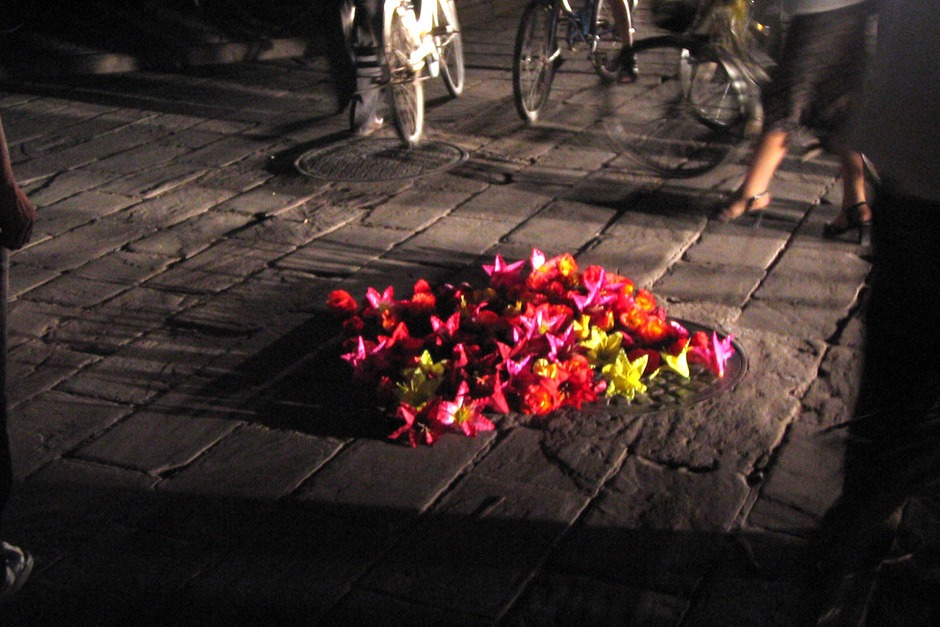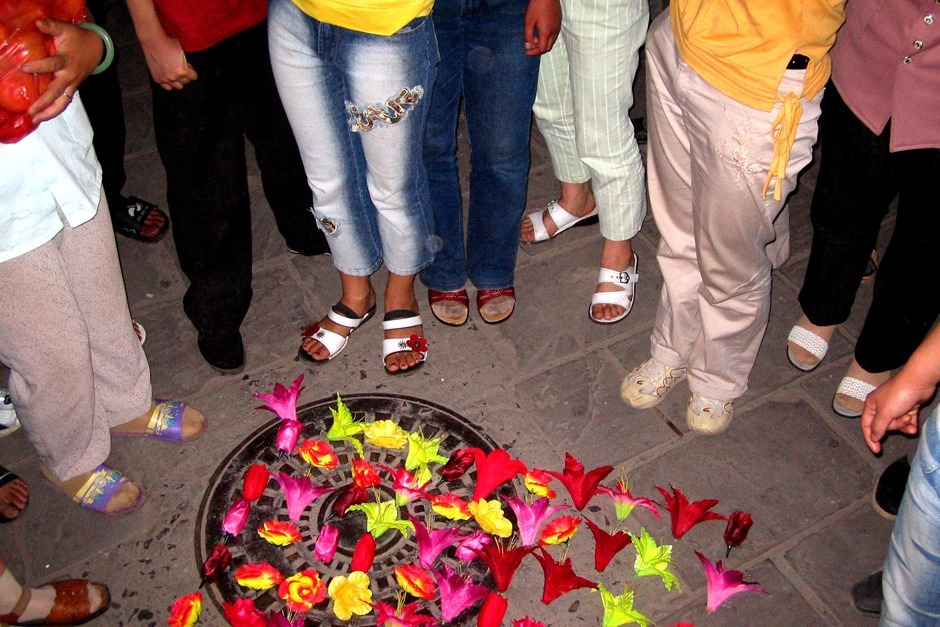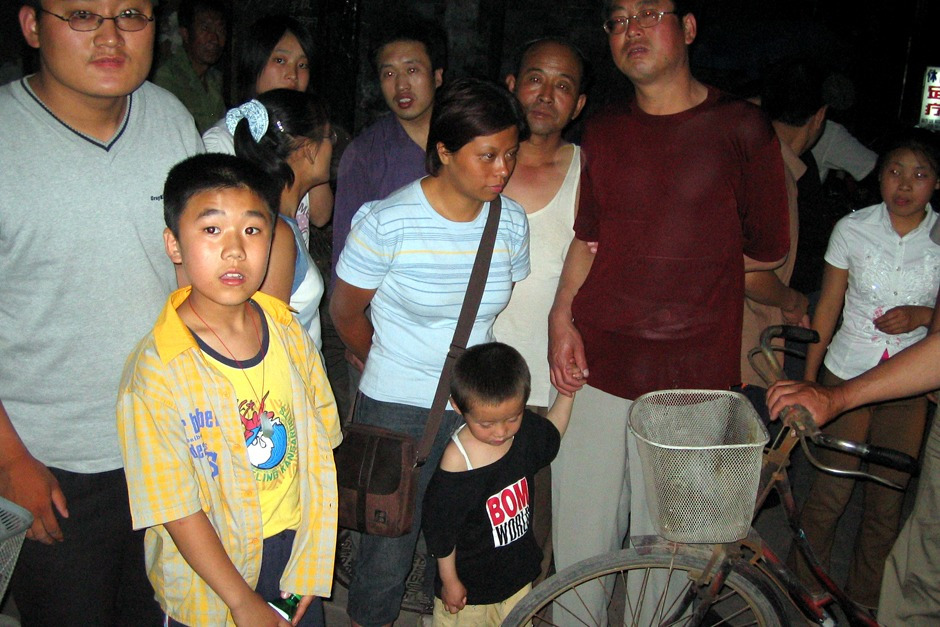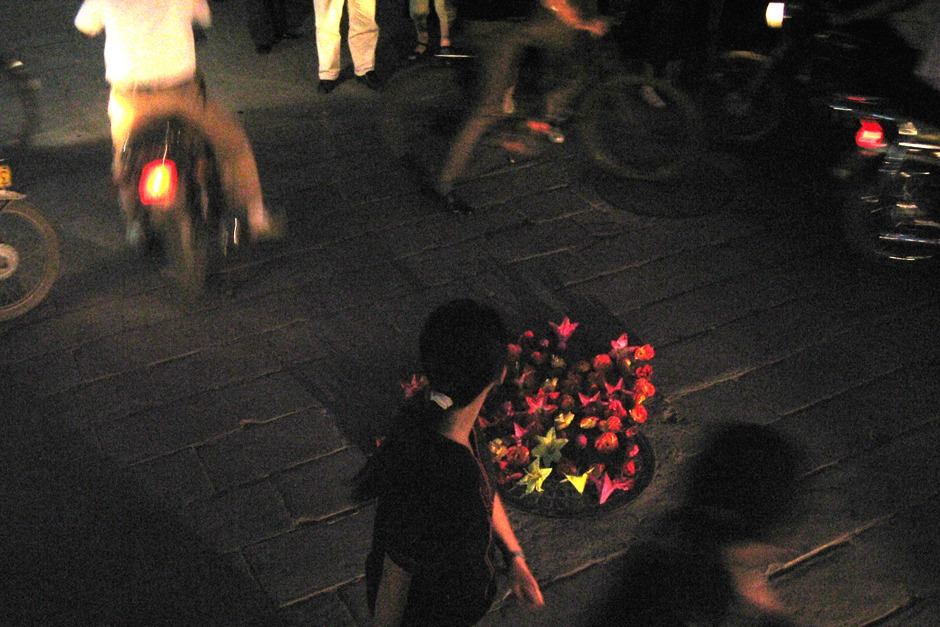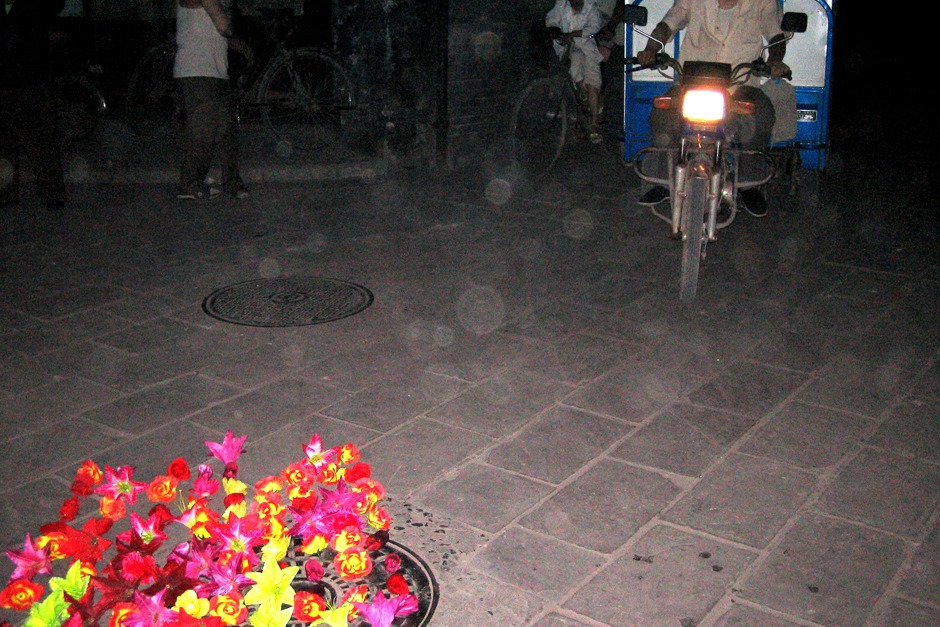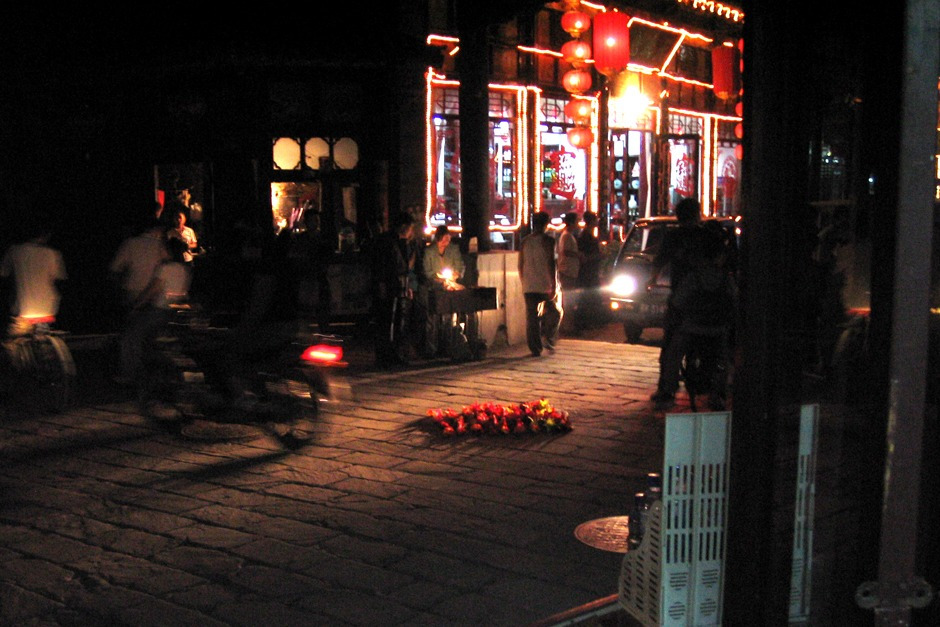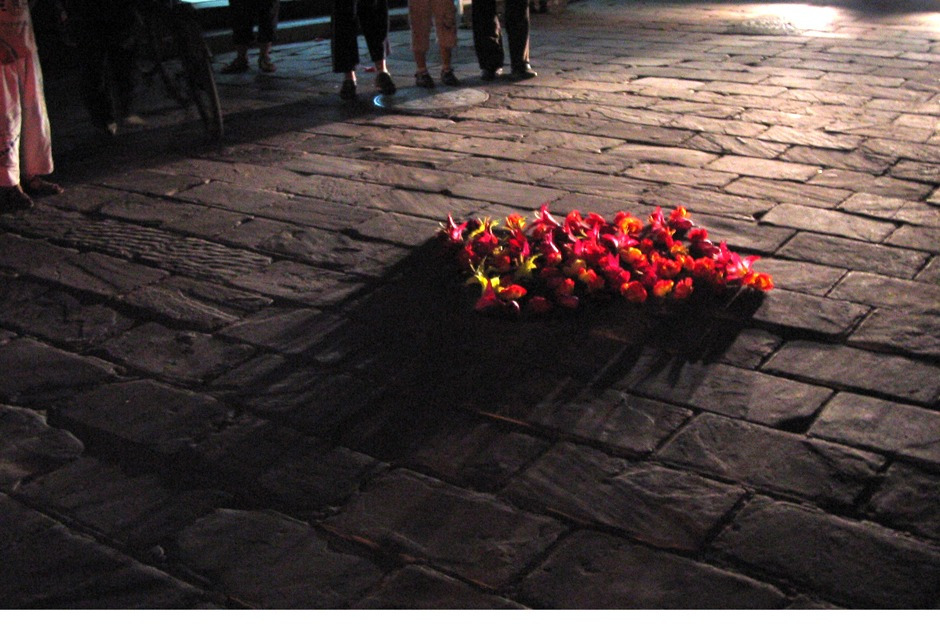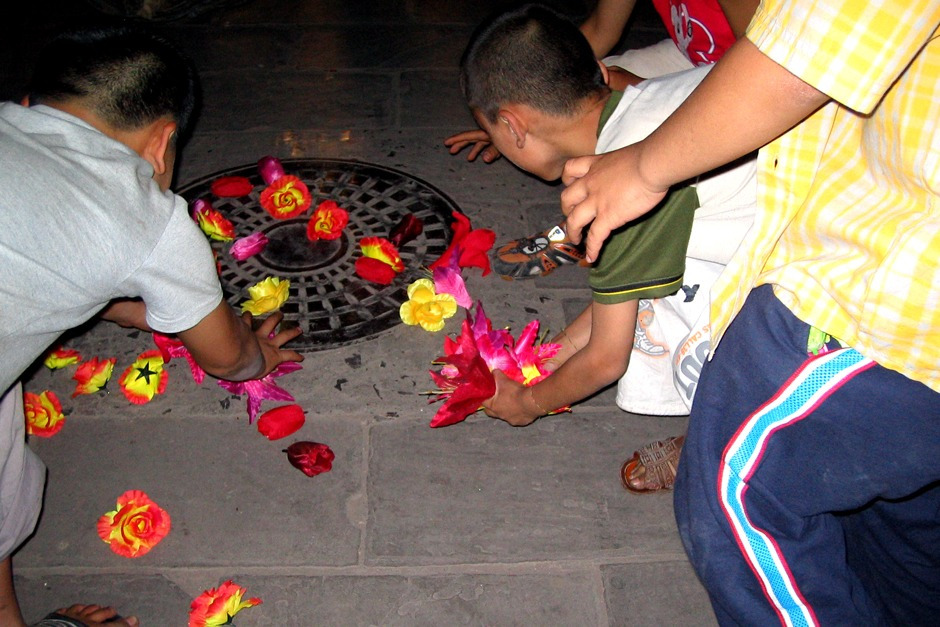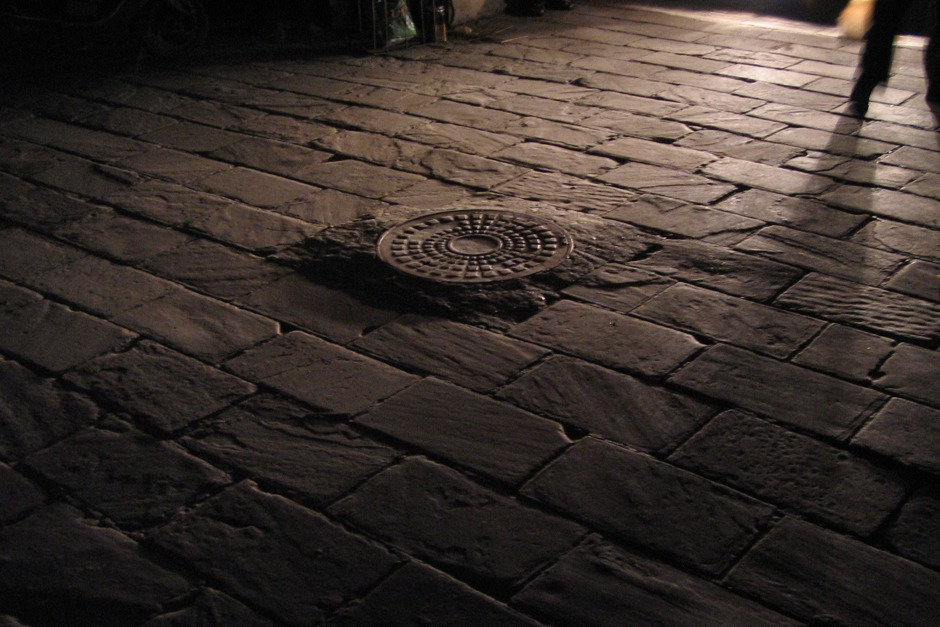
PINGYAO FLOWERS
Pingyao
Pingyao, famous for its preserved old city, filled with well kept traditional gardens, shrines, and temples, is exemplary of chinese ideas about the division between public and private space and the resulting utilization of the wall archetype. Inside the walls, pristine, maintained, picturesque nature & structures carefully constructed to optimize harmony found in traditional beliefs. Outside the walls, squalor and pollution abound in the streets. A gesture of beauty in the streets, temporarily reverses this ingrained dichotomy. A square of flowers were placed in the center of the main intersection of the old city. As the residents crowded around, unsure of the meaning, the commotion caused a traffic jam which unwittingly clogged the entire city. This installation revealed underlying psychologies and cultural ideas about public space, that something which required so much care and maintenance to uphold its beauty, such as a flower, is only appropriate inside, away from the public realm. This must change.
艺术装置 平遥花
平遥
平遥,以保存下来的古城著称,拥有传统的花园、圣坛和庙宇,体现了中国公共场所和私人场所分开的思想和利用围墙的典型。围墙内,保留下来的自然和构造如画一般,十分纯净,体现了传统的和谐思想。围墙外,肮脏和污染充斥大街。在街上,一种美的姿态暂时反而颠倒这根深蒂固的美丑分明的状态。古城的主要交通路口的中心摆满了鲜花。围观的居民并不知其中奥秘,越聚越多,结果引起了交通拥堵,并很快影响了整个城市的交通。这个装置揭露了隐含在背后的有关公共场所的心理因素和文化因素:人们习惯于将花儿这类需要倍加关心、呵护的元素远离公共空间,而只摆放在围墙内。这种状况必须改变。
